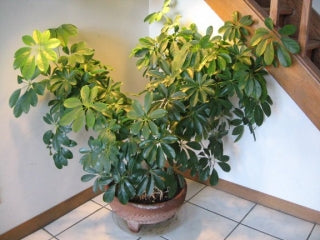The basic function of your living space remains pretty much the same as from our caveman days, namely to provide shelter from the elements, safety from threats and comfort. One could say that for the most part modern homes provide these basic functions. There is still room for improvment in those areas, mainly in protection against extreme weather as well as safety from fire, smoke and poisonous gases such as carbon monoxide. Homes need improvement in providing indoor air quality at the very least better than that outdoors. While technology continues to unearth solutions such as ionisers, humidifiers, dehumidifiers and so on, lets not overlook some simple solutions to problems affecting your living space.
One of the simplest things that one can do to improve the air quality in your home is by growing plants indoors. Plants as we all know take in carbon dioxide during photosynthesis and give out oxygen that we breathe. The additional ingredients needed for this process are sunlight and water. With some basic understanding, one can grow healthy house plants that thrive in your home, add a touch of green and clean up your air. It is important to make sure that plants receive the light they need. If you live in the northern hemisphere, most of your light would come from south facing windows. If you don't get much natural light, go for plants that do well in low light or artificial light such as schefflera. You can never have too many plants in your home as long as you have the space and light available. Plants also provide humidity which is beneficial to your skin and also increases the ability of the air to hold heat. This can result in lower heating bills while at the same time alleviating itchy skin and parched throats. Do not overwater your plants. The best way to find out whether its time to water your plants is by poking a finger in the soil to see how dry it is. If the surface soil is dry, its time to water and pour enough until the water seeps out from the drain holes. Wait until the top soil is dry before watering again.
Once you have plants in your home, now is a good time to design the lighting in your home in such a way that your plants derive maximum benefit. Light sources may be situated in a way that they light up the plants rather than the walls, thus providing indirect lighting to your space. The best kind of light for your plants and for your own health are full spectrum lamps, which simulate sunlight, unlike incandescent and fluorescent which only have certain wavelengths.
Carpets provide a welcome feel underfoot, but they also play havoc with indoor air quality. Carpet fibers are known to trap allergens as well as harmful chemicals from weedicides and other chemicals used on lawns. Carpets are very efficient at trapping dust, pollen, mites, ticks and dirt. While vaccuming and steam cleaning makes it look clean, there is only one fool proof way of removing all the bad stuff trapped in your carpet ...and that is by getting rid of the carpet itself. Thankfully, there are many modern alternatives to carpets such as wood, laminate, ceramic and concrete. Concrete floors are a recently reborn solution that is fast catching on in modern architecture and interior design. Not only can you stain your concrete floors any color or colors or pattern that you like, you can also have heating systems embedded in them. And for added effect and comfort you can always have area rugs around sitting areas while leaving traffic areas uncovered.

